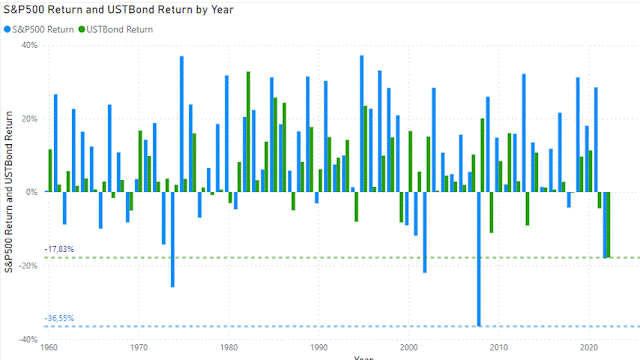A great starting point if you are new to Azure Synapse Link for Dataverse is Scott Sewell's YouTube playlist on Azure Synapse Link for Dataverse
Occasional rantings about Dynamics CRM/365, Power BI and Azure cloud. Taking the first small steps in machine learning, Python and algorithmic trading
Friday, April 28, 2023
Friday, April 21, 2023
SharePoint 2013 workflow retirement - the end of an era
Microsoft is (finally) retiring SharePoint workflows - the end of an era of workflows built on top of Microsoft Workflow Foundation (Workflow Foundation got introduced in 2005 - and yes I did play around with the beta of this back then - since I though it was the greatest thing since sliced bread )
Starting April 2d 2024 all SharePoint 2013 workflows will be turned off for newly created tenants. April 2d 2026 all SharePoint 2013 workflows will stop working for existing tenants.
Helpful links:
Tuesday, April 18, 2023
Looking at historical returns of stocks and bonds with Power BI and Python
You might already have seen below graph taken from a study by JP Morgan Asset Management, but what if you would like to look at historical returns without going through the hassle of having to collect all the data yourself?
There is an interesting Excel sheet shared by Aswath Damodaran (@AswathDamodaran) that you can download from Historical Returns on Stocks, Bonds and Bills: 1928-2022 which looks at returns of different asset classes (stocks, bonds, bills, real estate and gold) over a longer time period.
In this post I will share some tips on how you can use this data in Power BI, Python and Jupyter notebooks.
This Historical Returns on Stocks, Bonds and Bills: 1928-2023 - Excel file file is updated in the first two weeks of every year and it is being maintained by Aswath Damodaran, who is a professor of Finance at the Stern School of Business at NYU, he is also known as the "Dean of Valuation" due to his experience in this area.
- sheet_name: can be an integer (for the index of a worksheet in an Excel file, default to 0, the first sheet) or the name of the worksheet you want to load
- nrows: number of rows to read
- skiprows: number of rows to skip
- usecols: by default all columns will be read but also possible to pass in a list of columns to read into the dataframe like in the example
- Pandas – read_excel() – How to read Excel file in python
- Musings on markets: a return to teaching - the Spring 2023 Edition
- Guide to the Markets | JP Morgan Asset Management
- Interactive chart visualizations using Python and bqplot: visualizing S&P500 returns
- Using the yFinance Python package to download financial data from Yahoo Finance - part 2
- Using the yFinance Python package to download financial data from Yahoo Finance
- Using Python and Pandas Datareader to retrieve financial data - part 2: Fama & French data library
- Using Python and Pandas Datareader to retrieve financial data - part 1: Federal Reserve Data (FRED)








